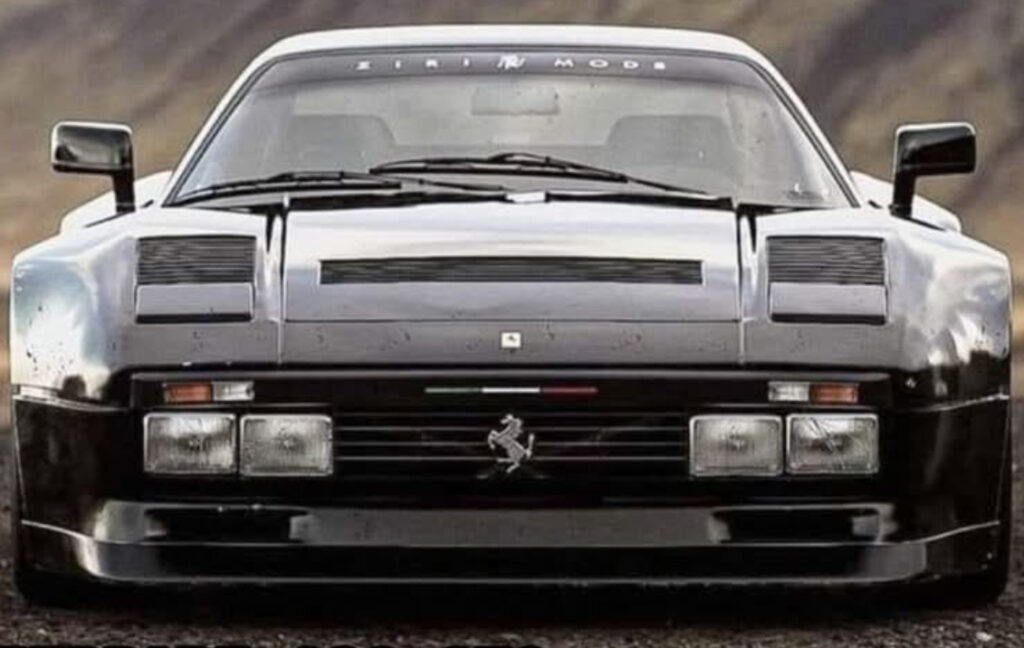In the annals of automotive history, there are cars that win races, cars that break records, and then there are cars that create legends—sometimes without ever crossing a finish line.
The Ferrari 288 GTO is one such machine: a marvel born from motorsport intent, forged with innovation, wrapped in mystique, and ultimately preserved in myth. It never fulfilled its original racing purpose, yet it became one of the most revered Ferraris ever built. Its legacy rests not on trophies, but on presence.
Built for a motorsport series that never materialized, the 288 GTO now lives in the rarefied air of automotive greatness, admired not only for what it is, but for what it could have been.
Group B Dreams: The Racing Series That Never Was
The Ferrari 288 GTO was conceived in the early 1980s, a time of escalating performance arms races and ambitious new regulations in motorsport. Ferrari’s target was Group B, a loosely governed and wildly experimental FIA category that promised to unleash automotive engineering from traditional constraints.
Group B was a playground for extremes. Turbochargers, lightweight materials, and radical aerodynamics defined the class. Audi had stormed the rally world with its quattro; Peugeot and Lancia were developing their own monsters. Ferrari, true to form, intended to dominate in its own style—by fielding a machine that fused their Formula 1 experience with road-going beauty. Thus was born the 288 GTO, Ferrari’s response to a future of turbocharged mayhem.
But just as the 288 GTO neared completion, Group B was cancelled following a spate of deadly accidents. The world never saw the 288 GTO in competition. Instead, it was offered to Ferrari’s most loyal clients as a homologation special—an elite series of just 272 examples, built for a battlefield that no longer existed.
Beyond the 308: An Evolution of Engineering
On paper, the 288 GTO might appear to be an iteration of the Ferrari 308 GTB, sharing basic proportions and visual cues. But that’s where the similarity ends. Ferrari’s engineers used the 308 only as a conceptual starting point. Beneath the familiar bodywork, almost every component of the 288 GTO was new, advanced, and race-inspired.
At the heart of the car was the F114B engine, a 2.8-liter V8 with twin IHI turbochargers and intercoolers, mounted longitudinally. This configuration allowed for better weight distribution and easier access to the gearbox—a necessity in motorsport design. It was compact, it was brutal, and it produced 400 horsepower, giving the GTO a 0–60 mph time under 5 seconds—a ferocious figure for the mid-1980s.
To accommodate this new powertrain and its associated systems, the chassis was lengthened, the track widened, and the body panels reshaped for aerodynamic efficiency. Ferrari didn’t merely build a fast car; they built a race car for the road, with Kevlar and carbon fiber reinforcing the body for lightweight strength. This was not marketing fluff—it was cutting-edge practice.
The Whisper That Roared: A Deal With the Neighbors
Despite its raw power, one of the most unexpected chapters in the 288 GTO’s story comes not from performance but from diplomacy. Located in Maranello, Ferrari’s factory is surrounded by residential neighborhoods. As development on the 288 GTO progressed, the company faced pressure from local residents concerned about noise pollution.
To maintain good relations, Ferrari reportedly made a quiet promise: the GTO would include a special exhaust silencer, reducing its auditory footprint during testing and delivery. This system, however, was easily removable. Owners soon discovered that a few simple tweaks restored the car’s full symphonic growl.
It’s a curious contradiction: a car built for thunder, silenced by compromise—until its true voice was unleashed by those bold enough to pull the plug.
Magnesium Mishaps and Mechanical Evolution
Even perfection has its problems. Early production versions of the 288 GTO featured a magnesium bellhousing, chosen for its strength-to-weight ratio. But this exotic material proved brittle under stress and prone to cracking. Ferrari, never one to risk reputation or safety, initiated a recall, replacing these units with aluminum components.
This episode underscores something often forgotten in the 288 GTO’s mythology: this was a car of cutting-edge experimentation, pushing materials and engineering beyond the comfortable. And sometimes, pushing that hard leads to revision. For collectors, this detail adds an extra layer of intrigue—those early magnesium-equipped cars are now part of the GTO’s rare technical lore.
Speed, Status, and Suitcases: The Gentleman’s Supercar
Among the 288 GTO’s more whimsical features was the inclusion of a custom-fitted luggage set—an option that spoke to the “GT” (Gran Turismo) portion of its name. Unlike its spiritual successors, such as the F40, the GTO was envisioned as a dual-purpose machine: equally at home on mountain passes or autobahns.
The luggage was more than a marketing gimmick. It served as a subtle reminder that the GTO, for all its track-bred DNA, could still be civilized. It could still tour. It could still carry you—and your belongings—in comfort and style.
This detail perfectly captures Ferrari’s approach in the 1980s: technology without sacrifice. A race car that could escort its owner across Europe, stopping at Michelin-starred restaurants and alpine resorts en route.
The Spiritual Predecessor to the F40
The 288 GTO’s story didn’t end with its 272-unit production run. In fact, it laid the groundwork for what many consider the greatest Ferrari of all time: the F40.
In many ways, the F40 was the 288 GTO unbound—lighter, faster, more extreme. It took the GTO’s turbocharged V8 and stretched it, both literally and metaphorically. But the DNA is unmistakable. Without the 288 GTO, there is no F40. And without the F40, modern Ferrari supercars would look very different.
The 288 GTO bridged the gap between the analog Ferraris of the 1960s and 1970s and the digital age of carbon composites and forced induction. It was a transitional masterpiece, pointing toward a future it would never race in, but one it helped define.
Cultural Legacy and Collector Reverence
Today, the Ferrari 288 GTO is a blue-chip collectible, with values soaring well beyond the $3 million mark. Its rarity, performance, and historical weight make it a cornerstone for serious collectors. But its appeal is not merely financial—it’s emotional.
To own a 288 GTO is to own a moment in time. A piece of what could have been. A car designed for glory that found immortality instead.
Its design, penned by Pininfarina and sculpted with wind tunnel precision, remains timeless. Its performance, once considered staggering, is still deeply engaging. And its presence—low, wide, and unmistakably menacing—is pure Ferrari.
Why the GTO Still Matters
In a world where performance figures are churned out in spreadsheet-like uniformity, the Ferrari 288 GTO reminds us that cars are more than numbers. They are stories. They are intentions. They are expressions of an era’s ambition.
The GTO never raced. But it trained to. And in that preparation, Ferrari gave us a machine so focused, so balanced, and so ahead of its time that it didn’t need a checkered flag to become a legend.
It remains a paradox: a car built to win that never competed, yet continues to dominate conversations four decades later.
Impression
The Ferrari 288 GTO’s legacy is not about the road it took—but the one it almost did. It exists at the crossroads of design and purpose, beauty and brutality, noise and nuance. It was a machine born for war, but offered peace. A monument to unrealized potential and perfected possibility.
As Ferrari moves into hybridization, electric drivetrains, and new market realities, the 288 GTO stands as a totem to the past—when turbo lag was part of the charm, when carbon fiber was cutting-edge, and when performance was crafted, not calculated.
No comments yet.








